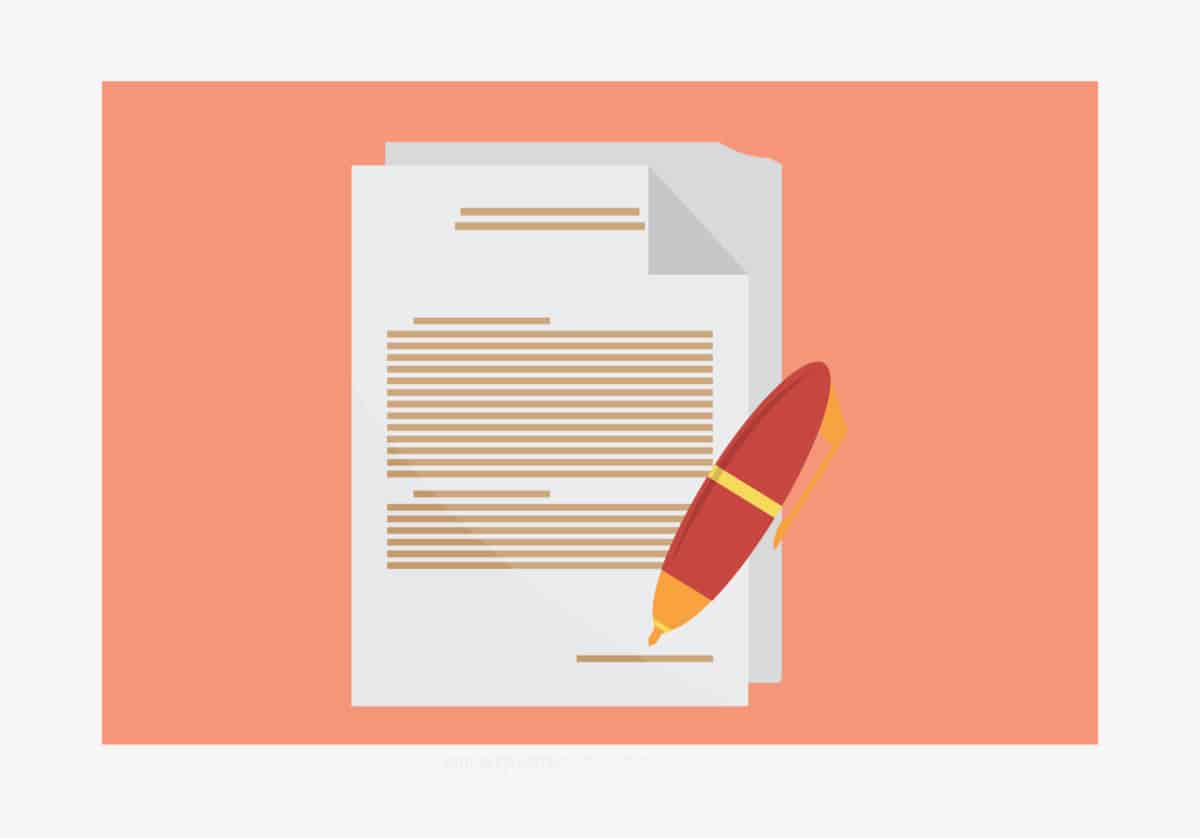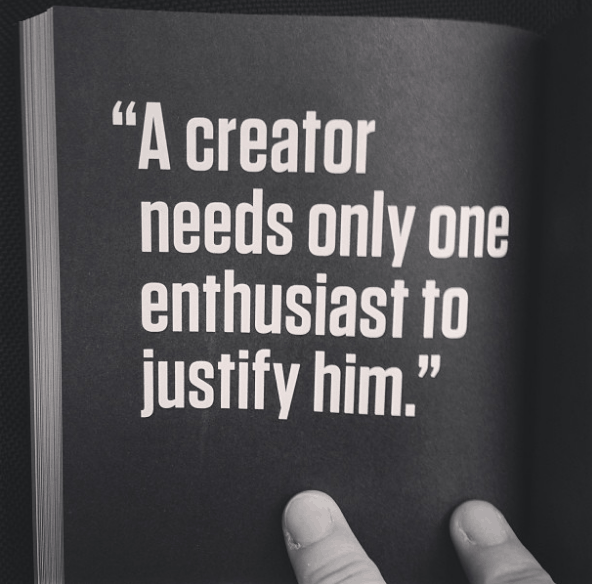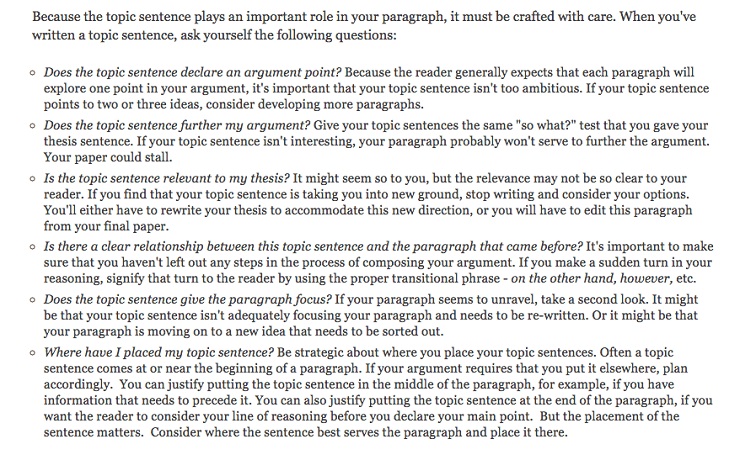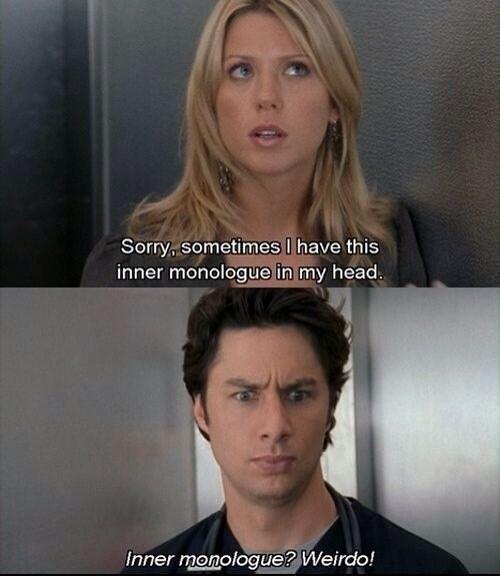“Sell yourself, and your subject will exert its own appeal. Believe in your own identity and your own opinions. Writing is an act of ego, and you might as well admit it. Use its energy to keep yourself going.” ― William Zinsser, On Writing Well
We’re all writing more than ever these days. On a daily basis, your average entrepreneur can expect to write emails, blog posts, tweets, instant messages, slide decks, press releases, and copywriting, which can collectively have a massive effect on your business.
Allison VanNest of Grammarly has said, “For many entrepreneurs, your writing is a reflection of your professionalism, your attention to detail, and even your brand. Taking care to write accurately is one easy way to move your business in the right direction.”
Writing well is never easy, even for the most famous writers in history. Writing for entrepreneurs is a skill, and with practice and care, anyone can learn to write effectively. William Zinsser, who wrote a famous guide to nonfiction writing, says, “Writing is thinking on paper. Anyone who thinks clearly can write clearly, about anything at all.”
This is what I’ve always said to friends who come to me saying they “suck at writing.” My response is usually something like, look, you can communicate your ideas effectively while talking, so I know you can do it while writing. Writing is just talking on paper. But we often get self-conscious about it, especially people who were once told by teachers that they weren’t good writers.
So there’s this block between what we want to say and the blank piece of paper, because we think we aren’t good enough. But if you have something to say, the world deserves to hear it. Writing is just communicating your thoughts. And, unlike a verbal conversation, you always have the delete key.
Writing is also inescapable, and as an entrepreneur, writing well can be one of your greatest weapons. So I’m here to help you hone that weapon, and walk you through a step-by-step process that will help you write clearly and concisely.
Don’t be scared, this won’t be like your freshman English class all over again. The following is a simple, straightforward guide to writing for entrepreneurial needs, whether that’s an email, a tweet, or an article.
Step 1: Decide What You Want to Say
Every piece of writing, no matter how short, must have a point. And in business communications, it’s best to get to that point quickly. This is especially true with email, but it holds up in all platforms. In academic or creative writing, the writer can slowly build up to the point.
In the business world, the point should be immediately clear, and the evidence should come after. Remember, you’re competing for your audience’s attention.
Know Your Audience
This is the first step to any and every form of writing: know who you’re writing to. Our style of communication changes drastically between, say, a message to your co-founder, an email to a potential client, and your pitch deck. While in a tweet, it’s fine to use casual grammar, in more formal writing—like to investors—you need complete sentences, proper punctuation, and a tone that matches your relationship (and your brand).
For everything you write, try asking yourself the following questions first:
- Who is the audience?
- What do they need?
- What do they value?
- What problem are you solving for them?
For something like a social media update, the answers should be fairly straightforward (because hopefully you’ve already answered these questions in your marketing strategy). For something like a pitch deck, thinking through these questions in extreme detail will set you up for success. This is why people recommend customizing every CV or pitch deck you send out. Each investor’s needs and values will vary, and so your presentation of the message should naturally vary as well. For more information on really digging into the needs and desires of your audience, this guide from Buffer goes through the process in painstaking detail.
Pick One Thing to Say
Once you know who you’re talking to and what they need from you, you should have a better idea of what you need to say, and want to say. Thinking through this helps to crystallize the message, or the point. Because if you don’t have a point, you might as well not say anything.
It sounds obvious, sure, but think of how many things you’ve read where at the end you went, why the hell did I just read that? And why does it even exist? Unfortunately, it happens all too often, and your job is to make sure your audience—whether it’s a coworker, a customer, or an investor—always knows the point. And always remember, people don’t care about you. They care about what you can do for them. So make it abundantly clear.
You may have a million things to say. But humans are linear and logical, and so we need to read in a linear and logical way. We need to be presented with one point at a time. This one point can have sub-points, yes, but the overall message needs to be a single cohesive idea. The reader needs to follow your logic down the line to your point.
This is the key to organizing your writing. Say one thing at a time.
For a longer-form article or essay, you might have a lot to say. But remember, each piece of writing, no matter the length, should answer the question, what is the point? While an article may have multiple messages to convey, they should all support the principal message of the piece.
Of course, sometimes, especially with email, we may have to respond to multiple questions in one message. The solution is to break down your different points into sections so that the reader has no trouble following, or finding the information that’s relevant to them.
Having a hard time pinning down your point? One tool that many writers use is “free-writing” or “prewriting,” in which you quickly throw all of your thoughts on the subject onto the paper, without concern for grammar, spelling, or punctuation. A lot of this will go in the garbage, but sometimes it helps your thinking on a topic coalesce, and you can then sift through to find any solid material.
Step 2: Organize Your Thoughts
The next step is to organize your thoughts in order to structure your piece of writing. The amount of time you should spend on this step varies.
For long pieces of writing, I spend a large chunk of my time on this step, as it makes the next steps much, much easier. Generally I like to take notes, then assemble them into an outline, where I structure my thoughts so that they flow into each other.
Gather Your Evidence
Let me tell you a secret: Writing is SO MUCH EASIER when you are prepared. Whether you’re shooting off a quick email or writing a long document, you should have all of your research and evidence right in front of you. Everyone has a preferred way of taking notes, so continue doing what works for you. Personally, my process looks like this:
- Lots of Googling
- Find credible sources, take notes, save URLs
- Gather data if needed (for an internal email to another member of my team, I might need some Mixpanel data. For a blog post, the above steps might get you most of the way there)
- Assemble all notes, research, and data in one place
Depending on my mood, I’ll use pen and paper or just a word document. A lot of writers these days are using Scrivener as a powerful tool to compile both research and drafts in one place. But it doesn’t matter where you keep your research. It just needs to be all together. Then, you can start organizing your thoughts and structuring what you’re going to write.
Make an Outline
I learned this technique from a high school English teacher, ended up leaning on it heavily in college, and continue to use it in my career on a weekly basis. I wrote about 100 papers in college and by the third year, was able to crank out a 15-page paper in around three hours.
How is that possible? Because I’d go nuts in the outline stage. I’d include the sources and quotations I wanted to use, and I’d break down each section into subsections, paragraphs, and points in each paragraph. Often my outlines would be two to three pages long.
The beauty of this process is that creating an outline is not that hard. As you’re going through, ideas start coming naturally, and patterns in the ideas begin to emerge. Making sense of your thoughts in an outline is much, much less painful than doing so while writing. You can easily move things around, or go back and add something in without having to rewrite everything.
Also, you’re not investing as much time and effort, so it’s much easier to get rid of stuff that’s not up to par. If you struggle with writing, this is a great way to get your thoughts on paper without the pressure of needing to make it coherent and ready for an audience. You’re working with the door closed.
“You don’t actually have to write anything until you’ve thought it out. This is an enormous relief, and you can sit there searching for the point at which the story becomes a toboggan and starts to slide.” — Marie de Nervaud
And here’s a little secret. There’s a similar basic outline to pretty much every form of written, nonfiction communication, and it goes like this:
- Introduce the message
- Sub-topic
a. Point
b. Evidence
c. Explanation - Repeat Step 2 until you’ve covered everything
- Summary and conclusion for the reader
The outline can be as detailed or as sloppy as you wish. Sometimes I’ll just jot down some notes on the order of my thoughts. Sometimes I’ll spend hours crafting an outline, so that when I sit down to write, the logic and flow of my thought process is already there. All I have to do is create complete sentences—all I have to do is write.
Step 3: Start Writing
That brings us to the next step: actually writing the damn thing. This is where a lot of people get stuck. It suddenly becomes a great time to clean the kitchen, or read the entire Wikipedia entry for Captain Planet and the Planeteers.
But here’s the thing. Once you’re prepared with your research and your outline, it’s best to just start writing, to get in the flow. Even if you don’t know how to say it yet, just start typing. The words will start to come. And once they do, don’t stop.
The first draft of everything is awful. The point is just to get everything out on paper. You know what you’re gonna say because you have your outline, so just start saying it. I affectionately refer to this stage as “word vomit.” This is where my most self-indulgent, my most atrocious, my grossest writing comes out.
But it’s okay, because no one sees it. It’s easy enough to revise and remove once I already have everything down on paper. It’s human nature to want to edit while we write, but you need to resist that urge. Write as much as you can. Keep writing until you’re done, or you need a break.
How to Write the Perfect Paragraph
One topic per paragraph. New topic? Make a new paragraph. In this day and age, it’s acceptable to split paragraphs down even smaller than we were taught in school.
On the screen, short paragraphs break up the text with soothing white space and drastically improve readability—especially on mobile, it sucks reading a giant wall of text, even though it’s only a few sentences long. I’d say this is particularly true in email. Be so, so generous with your line breaks. Everyone who receives your emails will thank you.
Each paragraph should have a topic sentence, aka the point of the paragraph. The point is to introduce the topic that the paragraph will be about. For me, this is one of the keys to clear, structured writing. The reader should not have to work to understand your thought process. It should be clearly evident because you’ve walked them through with proper introduction of new topics.
Here is a great guide on topic sentences from Dartmouth’s Writing Center:
Then there’s some evidence and expansion on the point. Don’t just throw in some evidence without explaining it. This is a common error in communication—tossing in a quote or piece of data and expecting the reader to make the correct conclusion. Connect the dots, so that the reader comes to the same conclusion as you. Lastly there’s a concluding sentence that, ideally, ties into the next paragraph.
Transitions are essential to writing that flows naturally. They are the glue that holds your ideas together. They guide the reader through your thought process and make sure that they understand how the logic of your ideas fit together. Take the above paragraph for example. I stuck in a transition sentence on the end that ties that paragraph into the following paragraph (this one). Without that last sentence, the flow of these two paragraphs would be broken, and when I started this paragraph, you’d probably be a little confused.
Not gonna lie, transitions are hard, and are frequently a sticking point for people who are trying to become better writers. In my experience, this is something that comes with practice and preparation. But I think our English teachers made us unnecessarily intimidated by transitions.
If you’ve properly structured what you want to say in the outline phase, the transitions should come naturally because the logic will flow naturally. They don’t have to be perfect. They just have to give a heads up to the reader, “By the way, this topic connects with this next topic I’m going to talk about.” These small courtesies to the reader have a drastic effect on readability.
Be Specific
This is a point that I’ve been stressing a lot recently when helping friends and colleagues edit their writing. In particular when we’re doing persuasive writing, like a pitch or a cover letter, we have a tendency to generalize or talk in broad terms.
Take a cover letter or resume for example: Our instinct is to talk about our overall experience and qualities that will resonate with the audience. But what you need to do is be specific about what you have accomplished. Use numbers, examples, or other hard data as much as you can to demonstrate your point.
Writers often call this principle, “show, don’t tell.” It’s a concept that applies in writing across the board, but it’s often not a very helpful suggestion on its own—because it’s not specific. It’s a super-broad term, and it’s telling you what to do. So it’s, essentially, an example of what not to do.
Speaking of which, giving an example is the best way to show instead of tell. It’s a natural instinct of communication, to give examples, so let that happen in your writing as well. By far the easiest shortcut I’ve found to “showing” is being specific with my language. Words are powerful, and if you use them with care they will resonate with your audience.
For example, I just dug up an old cover letter of mine. It’s bad. At one point I’d written:
“I have experience with many channels, direct and organic, and in the past have focused on both strategy and execution.”
A much better way to express this concept would be to BE SPECIFIC:
“I have experience with many channels and tools, including online advertising, content, social media, A/B testing, SQL, Google Analytics, and Mixpanel. At my previous company I ran marketing from strategy through launch, driving over 30,000 monthly page views and increasing conversions by 9% month over month.”
This isn’t perfect by any means, but you can see the difference—the power—when you use specific language and examples. This is especially important for entrepreneurs. If you’re passionate about your company, you’ll find it easy to tell people how great it is, but if you don’t show why and how, you won’t convince anyone.
Ever watch Shark Tank? You’ve seen when an entrepreneur comes on and talks about how great their product is and how people love it. But the Sharks don’t care. Their first question is always: “What are your sales?” The Sharks don’t want to be told how successful the company is. They want to be shown, so they can make the judgement for themselves.
Step 4: Let Your Style Shine Through
“Style means the right word. The rest matters little.” — Jules Renard
When I was in school, I enjoyed writing papers, and would often get feedback from teachers saying things like “your voice is strong here.” I had no idea what it meant. It’s just words from my head, I thought. How is it different from this other group of words? It was a “skill” that came naturally to me, like breathing.
Over the years I’ve come to understand what those teachers meant. I have a pretty strong inner monologue—probably due to reading a LOT of books as a child, and it’s worth noting here that reading is one of the best ways to improve your writing—and so it’s always felt natural to translate that to the page. I know that for many people, it doesn’t come naturally. Because let’s face it, a blank page is intimidating. We freeze up. We think we aren’t good enough.
Writing can be scary, especially if it’s a sensitive subject. It’s hard to put yourself out there. But all we can do is be ourselves, our best selves, because we have the option to edit and revise.
Henry Miller once said to a writer struggling with writer’s block, “Pretend the page is an ear.” It’s a great piece of advice that I think of often.
The key is to just let go. Let your style shine through. Let your inner voice take over, like it does when you’re talking to a good friend, or thinking through a problem in the shower. Just guide it onto the page, and don’t get in your own way.
Trust Your Instincts
You’re a better writer than you think. I promise. I’ll say it again: Don’t get in your own way.
“And by the way, everything in life is writable about if you have the outgoing guts to do it, and the imagination to improvise. The worst enemy to creativity is self-doubt.” ― Sylvia Plath
Whether it’s short or long, the quality of your writing will absolutely improve if you trust your instincts.
Choose Your Words Carefully
Be concise. It’s more powerful when you say more with less. Pick the perfect word, always. Try to avoid buzzwords and jargon, they only alienate the reader. Don’t say “utilize” when you can say “use,” don’t say “as well as” when you can say “and.”
Use a thesaurus, but don’t go overboard. There may be 20 synonyms when you search for a word, but that doesn’t mean you should use them interchangeably. If they all meant the exact same thing, there wouldn’t be 20 synonyms. This is where nuance lies. I use the thesaurus more than any other tool while writing. But each word will have a slightly different effect on the sentence, so tread lightly.
Flow and Cadence
There’s nothing I can say that would be more helpful than the following, which I found recently and which perfectly sums up everything you need to know about this topic:
“This sentence has five words. Here are five more words. Five-word sentences are fine. But several together become monotonous. Listen to what is happening. The writing is getting boring. The sound of it drones. It’s like a stuck record. The ear demands some variety. Now listen. I vary the sentence length, and I create music. Music. The writing sings. It has a pleasant rhythm, a lilt, a harmony. I use short sentences. And I use sentences of medium length. And sometimes, when I am certain the reader is rested, I will engage him with a sentence of considerable length, a sentence that burns with energy and builds with all the impetus of a crescendo, the roll of the drums, the crash of the cymbals–sounds that say listen to this, it is important.” ― Gary Provost
Step 5: Revise
Be ruthless in your revisions. This is where great writing really shines. When we’re speaking, there’s no way to go back and edit. But when we’re writing, we can go back and mold our thoughts to be tighter and more concise, and that gives you a huge advantage.
Remove as Much as Possible
Omit needless words.
Mark Twain once said, every time you want to write “very,” write “damn” instead. That way your editor will remove the “damn”s and you’ll be left with concise and powerful writing. In On Writing, Stephen King wrote that the key to successful revision is, “2nd Draft = 1st Draft – 10%.” I’d put it closer to 25%.
We have a tendency, especially in business, to use 10 words when three would do. We think it makes us sound smart. But it really doesn’t. What makes you sound smart is using specific language, and avoiding weak language.
We also have a tendency to repeat ourselves to really try to drive that killer point home again and again. But particularly in business, where everyone who is reading your writing is busy, repetition just makes you look sloppy and careless with your reader’s time. So next time you’re revising, keep an eye out for repetition of concepts. If you say one thing a few different ways, pick one way to say it, and delete the rest.
Read it Aloud
I’ll be honest, I don’t do this very often. But when I’m struggling with getting something to sound right, it works really well. You want your writing to be like a conversation with your reader, you want your commas to align with pauses for breath, and you want your writing to flow. By reading it out loud, it’s much easier to spot the weird spots in a sentence.
“If it sounds like writing, I rewrite it. Or, if proper usage gets in the way, it may have to go. I can’t allow what we learned in English composition to disrupt the sound and rhythm of the narrative.” — Elmore Leonard
Ask a Friend
Friends and co-workers are for editing your work. After all, you’re on the same team. Chances are you know a former English major who’d be happy to look over important documents before you hit send. If you’re not that lucky, or if you’re putting out lots of content, you can hire a copy editor to look over your writing.
Bonus Advice!
Read
Read a lot. Pay attention to the words you see around you, and the emails and articles you read every day. Why is it working (or not)?
Read literature. There’s a reason classic literature has been passed down for decades and centuries. With literature, the writing affects the message. Nuances in language are pronounced. The vocabulary is creative, and it expands our minds past the blog-speak we’re reading daily. Here’s a great guide on how to read more books.
Practice
Practice, practice, practice. The act of writing deliberately makes you better.
I’ve found that using Twitter for years has made me a better writer. Having to squish your thought into 140 characters helps you a) write more simply and b) think about many different ways to express your thought. More often than not, I’ll have something to say, but it doesn’t fit in 140 characters. So I frame it in a shorter way. But the meaning has changed slightly. So I repeat this until I’m happy with the length and the meaning.
This practice of honing your thoughts, of coming up with different ways of saying one thing, makes you a better writer. You’re expanding your mind and connecting words and phrases and ideas in many different ways. If writing is a muscle, character limits are interval training.
Conclusion
“Just write every day of your life. Read intensely. Then see what happens. Most of my friends who are put on that diet have very pleasant careers.” — Ray Bradbury
Communication is never easy, but it’s such an essential element to running a successful business that every entrepreneur owes it to their company to proactively work on their writing skills.
Since we’re writing constantly, we have endless opportunities to improve. If you’re thoughtful and prepared and you trust in your instincts, your writing will magically improve—I promise. If it doesn’t, you can yell at me.
How about you? Love writing or hate it? How have you learned to be a better writer? Any tips or tricks that we forgot to mention?


























